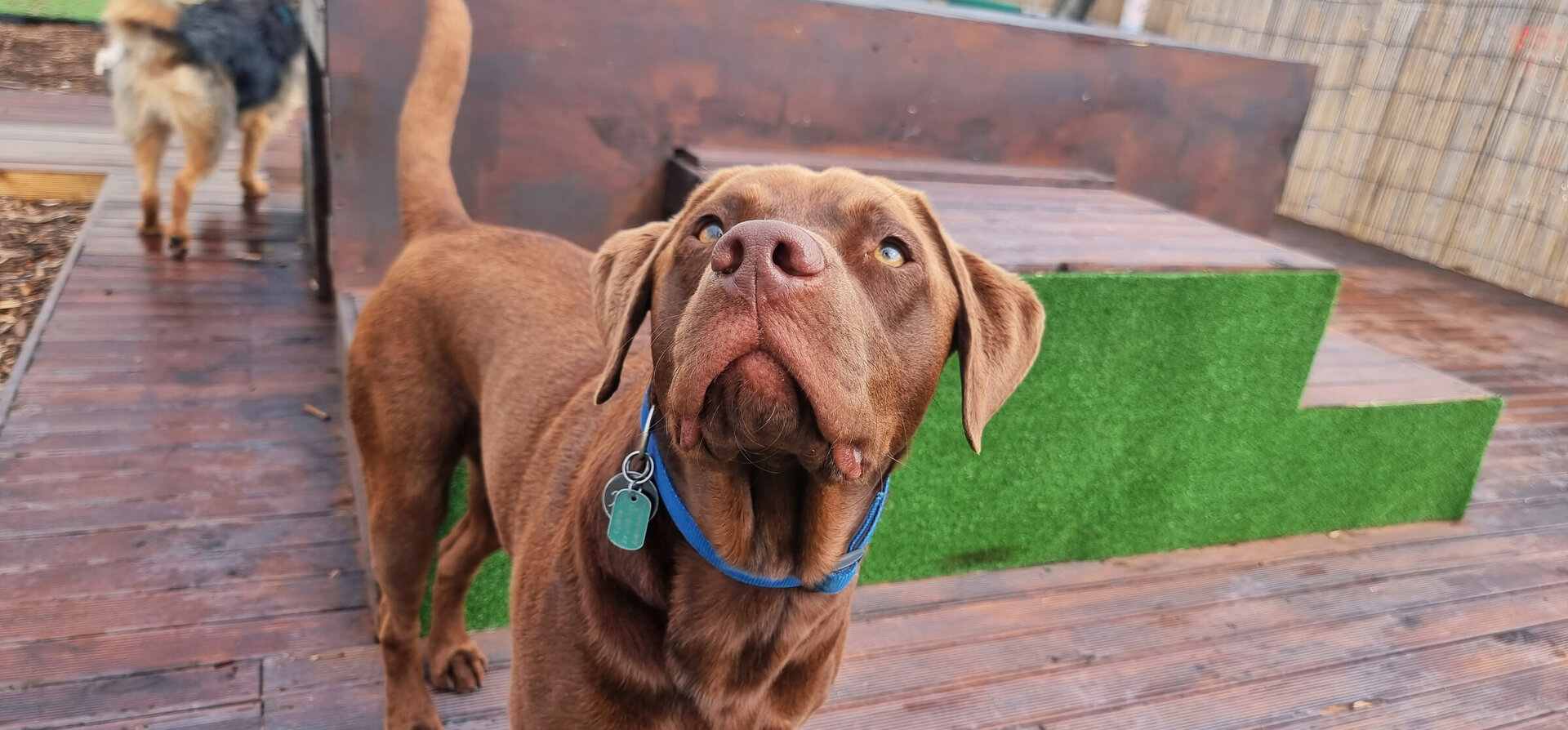Training pet dog behavior is for two general purposes—“do” and “don’t”: First is training basic manners, or “do”—to perform desired behaviors on cue such as “sit,” “down,” “come,” “stay,” and walk politely on leash. The other purpose of pet dog training is “don’t do”—don’t jump, pull on leash, run away, take candy from the baby and the like.
What do Rewards Have to do with it?
It’s poetic to think that dogs live to please their masters, but the reality is that dogs live to please themselves. When we ask our dogs to do something, the first thought racing through their heads is, “What’s in it for me right now?” Behaviors that are rewarded are statistically more likely to be repeated, so when we regularly reward our dogs for a job well done, they’ll want to keep showing up for work! Not all rewards are created equal, and understanding what your dog finds rewarding is an important step in the training process.
Using Food in Training
Food can be a very valuable reinforcer (paycheck!) for dogs during training. It’s one of a very short list of things that dogs are born already knowing is good. While most dogs easily learn to enjoy praise, petting and play – all of which also make good rewards -- food still holds a special place in their mind due to its primal nature.
Some people express concern about using food in training, worried they will create a dog who will only work if he knows there’s food. This is a valid concern, as it can happen if food is mis-used. The trick is to make sure that food is being used as a reward and not a bribe. There’s a big difference!
Reward vs. Bribe
If you ask the dog to do something, he does it, and you give him a treat, that treat is a reward. If you ask the dog to do something he knows how to do, a behavior that he has demonstrated repeatedly on request for a long period of time, and he doesn’t do it, maybe you ask again. If he STILL doesn’t do it, and when you then reach into your pocket and get a treat, and suddenly all of a sudden the dog springs into action to comply with your original request, THAT treat just became a bribe! You asked him to do it, he didn’t, you got food, and he decided to get to work. Good training strives to avoid this.
Preventing Bribery
The trick is to get the visual presence of the food out of the learning picture as soon as possible. For example, when lure-training (think cookie on the dog’s nose and over his head to achieve a sit), you want to get the cookie off his nose just as soon as you see him grasp the physical mechanics of the behavior. At that point, start using the same gesture minus the cookie, and reward the dog with a treat from your pocket once his rear is on the floor. This helps teach the dog the important lesson that he must successfully do the work before you’re willing to dole out the reward.
Another important tip for preventing accidental bribery is to make sure you have your dog’s attention before asking him to do something. Often, people resort to bribery because the dog didn’t respond the first time they asked – but when they asked, the dog wasn’t even paying attention. Try to avoid talking to your dog’s tail end!
Before asking your dog to sit, lie down, or come when you call him, do your best to make sure he’s looking at you. Teach him to respond quickly to his name, so that when he’s distracted, using his name will prompt him to check in, at which point you can ask for the next behavior. You want him to respond to his name with the same enthusiasm that he responds to the words “Do you want a treat"?
Using Life Rewards in Addition to Food Treats
Once your dog is reliably responding to your hand-signals, begin to vary how he gets his rewards. Sometimes use a treat, but often times, use something else he’s telling you he wants – like his leash put on to go for a walk, his favorite toy to be thrown, or an invitation to join you on the couch for snuggle time. By using these types of “life rewards,” you’re teaching your dog that keeping you happy by complying with your requests is the key to opening the door to everything good in his world – not just food treats! This also allows you to use food randomly – as a surprise – which is extremely exciting for dogs, and often motivates them to work even harder
Tricks of the Trade Treat Tips
- Use soft treats and make them small – about the size of a pea. Small, soft treats can be eaten quickly, which aids in your timing as a trainer. Using small treats allows you to be generous without over-feeding your dog. Dogs don’t care how big each cookie is; they’re more impressed by how many they get.
- Try different types of treats. A dog treat doesn’t have to be labeled as such on the package. Bits of cooked meats, cheese, hotdogs, pasta, dry cereal and even fruits and vegetables can be rewarding to dogs. Experiment to discover what really excites him.
- Remember that what’s exciting at home may fail in comparison to the distracting sights and smells out in public. Save your “extra special’ treats for training in distracting environments.
- Get into the habit of petting your dog as you deliver the treat. Don’t simply be a Pez dispenser. When you consistently pair petting with treats, you raise the value of your touch. Now you have another way to pay your dog: petting!
- If your dog has dietary restrictions and cannot tolerate many foods besides his kibble, you can use kibble for his training. To make it seem more interesting, put some in a baggie with a few chunks of cut up hot dog. The kibble will take on the hot dog smell.
- Don’t over do it! The goal is to achieve a trained dog – not a trained, yet pudgy pupdog! Consider cutting back a bit on what goes into your dog’s food bowl and/or set aside a portion of his kibble and use that for training
Source APDT



